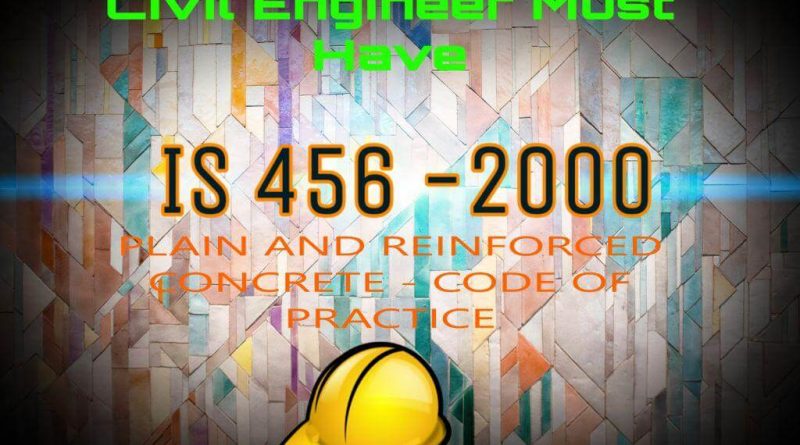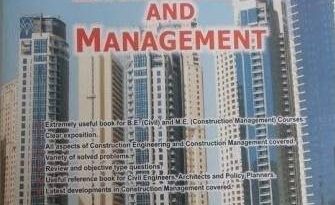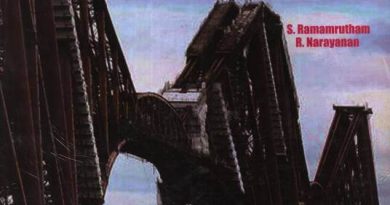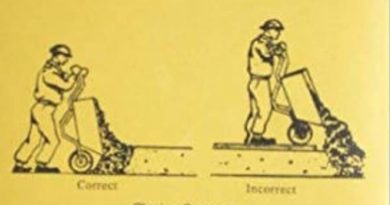IS 456 -2000 PLAIN AND REINFORCED CONCRETE – CODE OF PRACTICE ( Fourth Revision )
This Is a vary essential code book for Concrete structure design. It needs for all civil engineer. DOWNLOAD IS 456 2000
This Indian Standard (Fourth Revision) was adopted by the Bureau of Indian Standards, after the draft finalixed by the Cement and Concrete Sectional Committee had been approved by the Civil Engineering Division Council. This standard was first published in 1953 under the title ‘Code of practice for plain and reinforced concrete for general building construction’ and subsequently revised in 1957. The code was further revised in 1964 and published under modified title ‘Code of practice for plain and reinforced concrete’, thus enlarging the scope of use of this code to structures other than general building construction also. The third revision was published in 1978, and it included limit state approach to design. This is the fourth revision of the standard. This revision was taken up with a view to keeping abreast with the rapid development in the field of concrete technology and to bring in further modifications/improvements in the light of experience gained while using the earlier version
of the standard.
This revision incorporates a number of important changes. The major thrust in the revision is on the following lines:
a) In recent years, durability of concrete structures have become the cause of concern to all concrete
technologists. This has led to the need to codify the durability requirements world over. In this revision of the code, in order to introduce in-built protection from factors affecting a structure, earlier clause on durability has been elaborated and a detailed clause covering different aspects of design of durable structure has been incorporated.
b) Sampling and acceptance criteria for concrete have been revised. With tbis revision acceptance criteria has been simplified in line with the provisions given in BS 5328 (Part 4):1990 ‘Concrete: Part 4
Specification for the procedures to be used in sampling, testing and assessing compliance of concrete’.
Some of the significant changes incorporated in Section 2 are as follows:
a)All the three grades of ordinary Portland cement, namely 33 grade, 43 grade and 53 grade and sulphate resisting Portland cement have been included in the list of types of cement used (in addition to other types of cement).
b)The permissible limits for solids in water have been modified keeping in view the durability requirements.
c)The clause on admixtures has been modified in view of the availability of new types of admixtures
including superplasticixers.
d)In Table 2 ‘Grades of Concrete’, grades higher than M 40 have been included.
e)It has been recommended that minimum grade of concrete shall be not less than M 20 in reinforced
concrete work (see also 6.1.3).
f)The formula for estimation of modulus of elasticity of concrete has been revised.
g)In the absenceof proper correlation between compacting factor, vee-bee time and slump, or kability
has now been specified only in terms of slump in line with the provisions in BS 5328 (Parts 1 to 4).
h)Durability clause has been enlarged to include detailed guidance concerning the factors affecting durability.
The table on ‘Environmental Exposure Conditions’ has been modified to include ‘very severe’ and
‘extreme’ exposure conditions. This clause also covers requirements for shape and size of member,
depth of concrete cover, concrete quality, requirement against exposure to aggressive chemical and sulphate attack, minimum cement requirement and maximum water cement ratio, limits of chloride content, alkali silica reaction, and importance of compaction, finishing and curing.
i)A clause on ‘Quality Assurance Measures’ has been incorporated to give due emphasis to good practices of concreting.
j)Proper limits have been introduced on the accuracy of measuring equipments to ensure accurate batching of concrete.
DOWNLOAD IS 456 2000
GENERAL TABLE OF CONTENT..
- -General
- – Materials, Workmanship, Inspection and Testing
- – General Design Consideration
- – Special Design Requirements for Structural Members and Systems
- – Structural Design (Limit State Method)
CLICK HERE TO DOWNLOAD IS 456 2000
Also you Can Visit
- ILLUSTRATED DESIGN OF REINFORCED CONCRETE BUILDINGS By Late Dr. S. R. Karve and Dr. V. L. Saha
- PDF Download Construction Engineering and Management by Dr. S. Seetharaman
- Easy Bar Bending Theory by Ansuman Santra
- Get your 3D Building design and elevation online in your place with lowest price
- How can we conserve water in our homes
- Download Strength of Material Book by Ramamrutham
DISCLAIMER: We are not the original publisher of this book. This e-book has been collected from other websites on internet. All the rights on this book belongs and reserved to Respective Publishers.
FOR VISITORS: Our all E-book, Content and resource are free to download and usable for Learners, Students and Practitioner who not eligible to purchase book. Note- Always purchase the original book from the respective author if you can.





